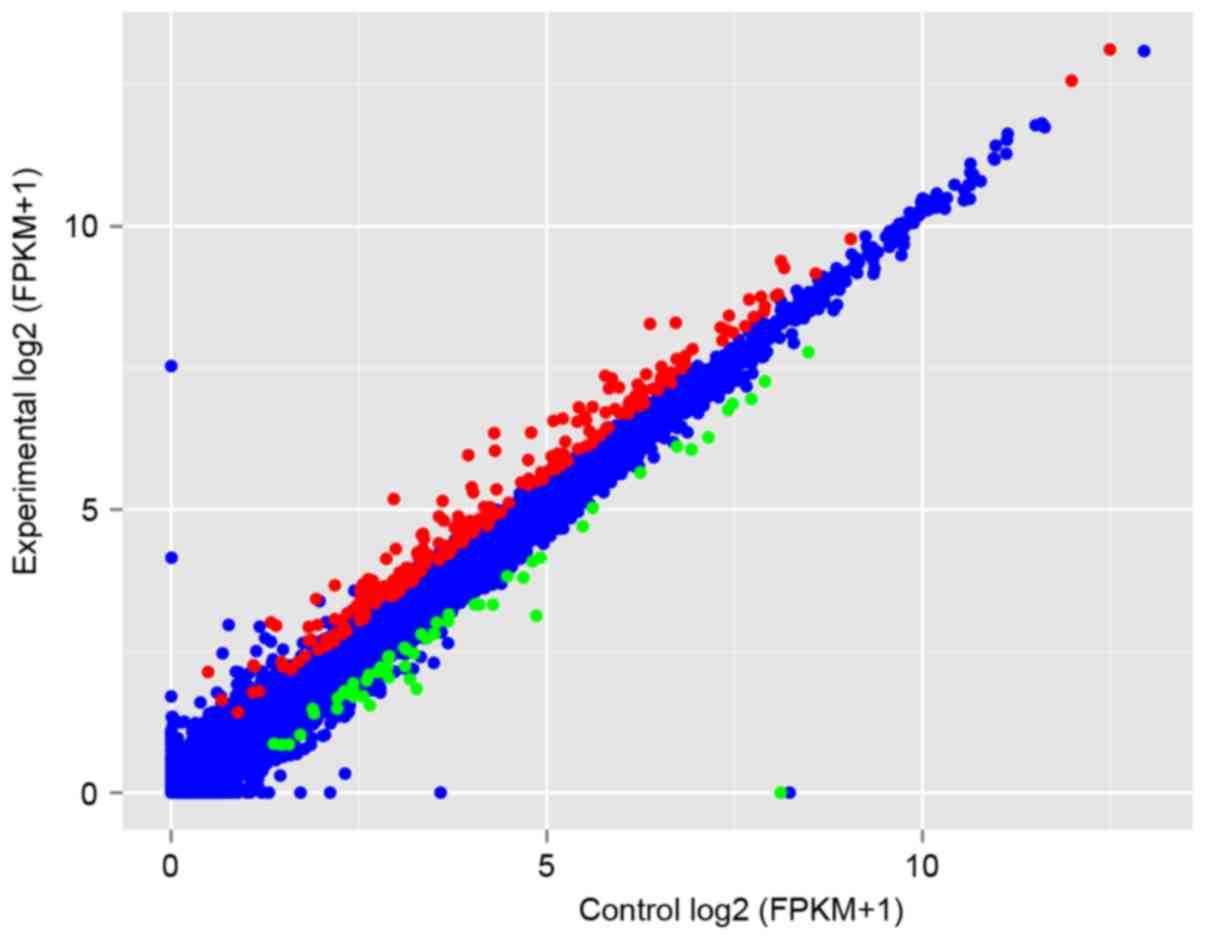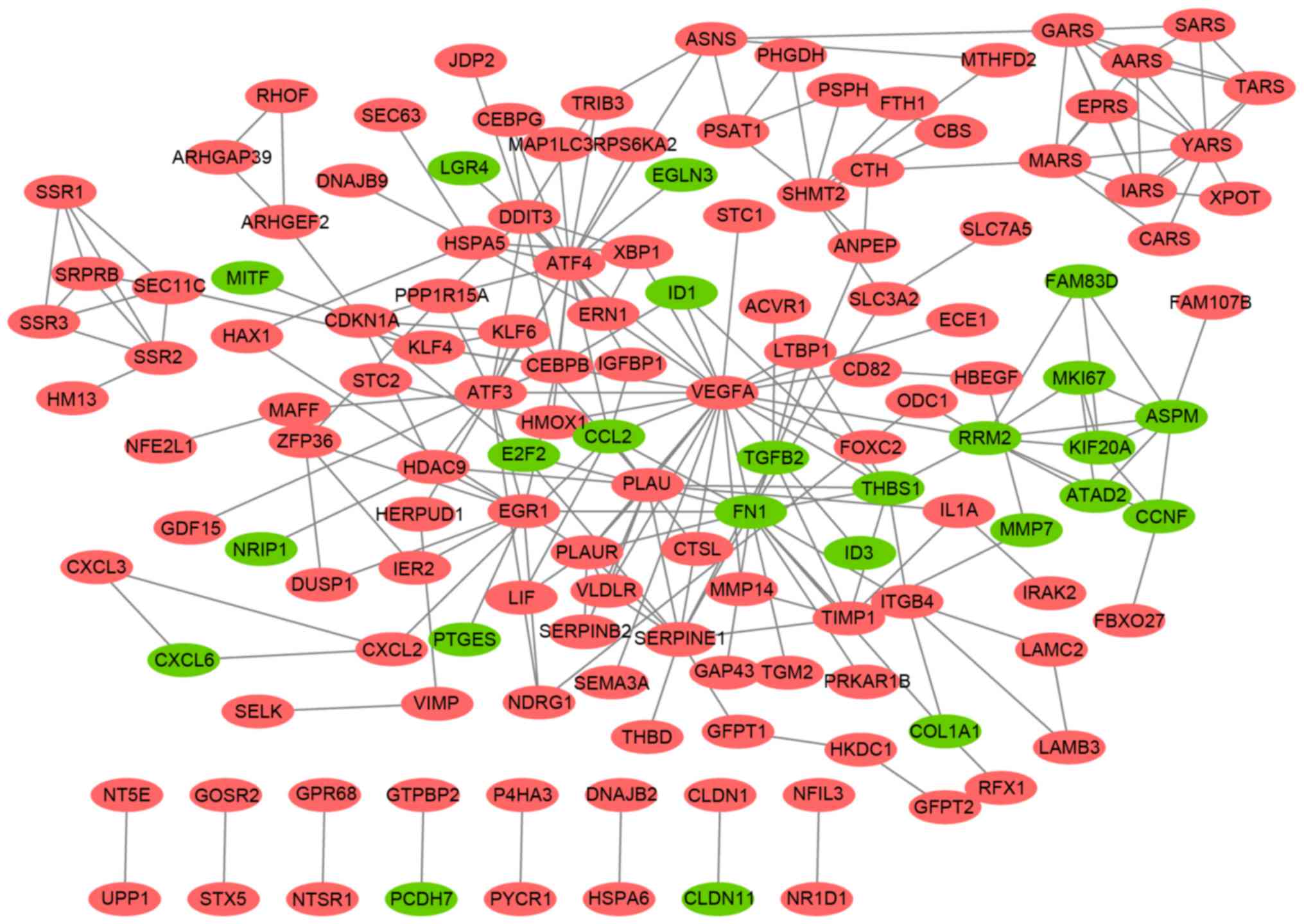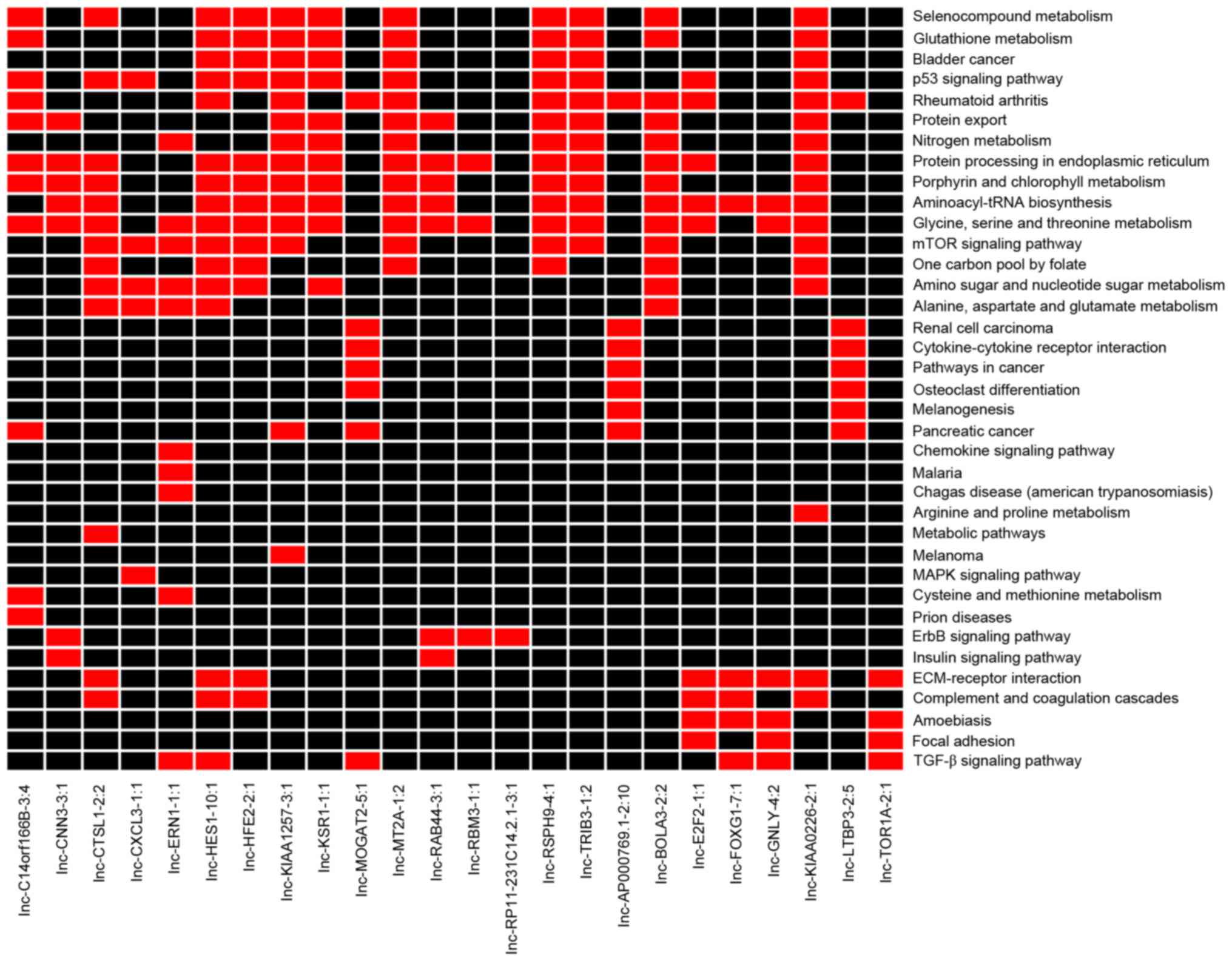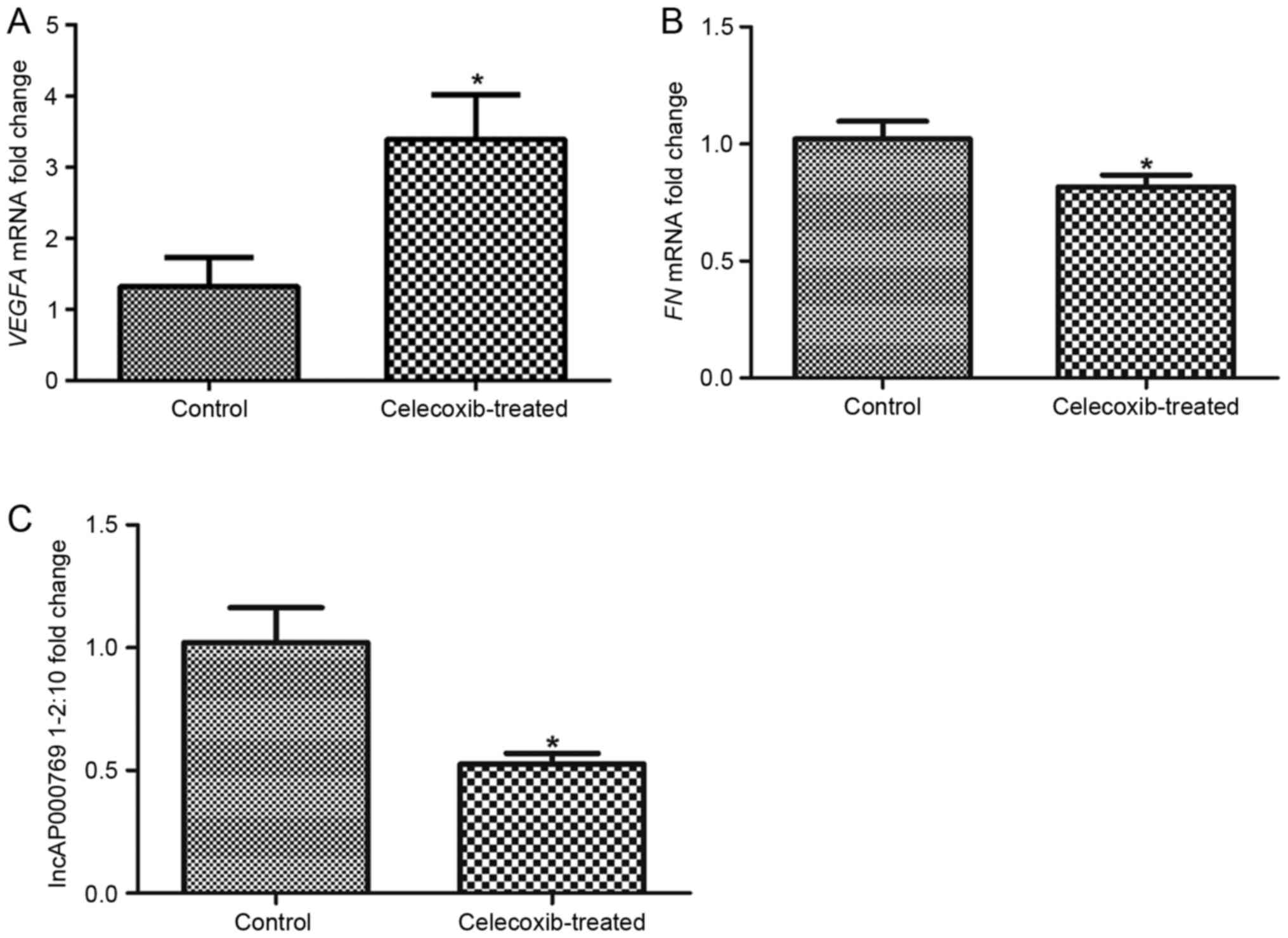|
1
|
Henley SJ, Richards TB, Underwood JM,
Eheman CR, Plescia M and McAfee TA: Centers for Disease Control and
Prevention (CDC): Lung cancer incidence trends among men and
women-United States, 2005–2009. MMWR Morb Mortal Wkly Rep. 63:1–5.
2014.PubMed/NCBI
|
|
2
|
de Groot P and Munden RF: Lung cancer
epidemiology, risk factors, and prevention. Radiol Clin North Am.
50:863–876. 2012. View Article : Google Scholar : PubMed/NCBI
|
|
3
|
Siegel RL, Miller KD and Jemal A: Cancer
statistics, 2015. CA Cancer J Clin. 65:5–298. 2015. View Article : Google Scholar : PubMed/NCBI
|
|
4
|
Cancer Genome Atlas Research Network:
Comprehensive genomic characterization of squamous cell lung
cancers. Nature. 489:519–525. 2012. View Article : Google Scholar : PubMed/NCBI
|
|
5
|
Bendale Y, Bendale V, Birari-Gawande P,
Kadam A and Gund P: Tumor regression with ayurvedic rasayana
therapy in squamous cell carcinoma of lungs. Rasamruta. 7:1–5.
2015.
|
|
6
|
Mascaux C, Martin B, Verdebout JM, Ninane
V and Sculier JP: COX-2 expression during early lung squamous cell
carcinoma oncogenesis. Eur Respir J. 26:198–203. 2005. View Article : Google Scholar : PubMed/NCBI
|
|
7
|
Altorki NK, Keresztes RS, Port JL, Libby
DM, Korst RJ, Flieder DB, Ferrara CA, Yankelevitz DF, Subbaramaiah
K, Pasmantier MW and Dannenberg AJ: Celecoxib, a selective
cyclo-oxygenase-2 inhibitor, enhances the response to preoperative
paclitaxel and carboplatin in early-stage non-small-cell lung
cancer. J Clin Oncol. 21:2645–2650. 2003. View Article : Google Scholar : PubMed/NCBI
|
|
8
|
Liu X, Yue P, Zhou Z, Khuri FR and Sun SY:
Death receptor regulation and celecoxib-induced apoptosis in human
lung cancer cells. J Natl Cancer Inst. 96:1769–1780. 2004.
View Article : Google Scholar : PubMed/NCBI
|
|
9
|
Gold KA, Kim ES, Lee JJ, Wistuba II,
Farhangfar CJ and Hong WK: The BATTLE to personalize lung cancer
prevention through reverse migration. Cancer Prev Res (Phila).
4:962–972. 2011. View Article : Google Scholar : PubMed/NCBI
|
|
10
|
Fu SL, Wu YL, Zhang YP, Qiao MM and Chen
Y: Anti-cancer effects of COX-2 inhibitors and their correlation
with angiogenesis and invasion in gastric cancer. World J
Gastroenterol. 10:1971–1974. 2004. View Article : Google Scholar : PubMed/NCBI
|
|
11
|
Mineo TC, Ambrogi V, Cufari ME and Pompeo
E: May cyclooxygenase-2 (COX-2), p21 and p27 expression affect
prognosis and therapeutic strategy of patients with malignant
pleural mesothelioma? Eur J Cardiothorac Surg. 38:245–252. 2010.
View Article : Google Scholar : PubMed/NCBI
|
|
12
|
Khan Z, Khan N, Tiwari RP, Sah NK, Prasad
GB and Bisen PS: Biology of Cox-2: An application in cancer
therapeutics. Curr Drug Targets. 12:1082–1093. 2011. View Article : Google Scholar : PubMed/NCBI
|
|
13
|
Ponting CP, Oliver PL and Reik W:
Evolution and functions of long noncoding RNAs. Cell. 136:629–641.
2009. View Article : Google Scholar : PubMed/NCBI
|
|
14
|
Wang KC and Chang HY: Molecular mechanisms
of long noncoding RNAs. Mol Cell. 43:904–914. 2011. View Article : Google Scholar : PubMed/NCBI
|
|
15
|
Yang YR, Zang SZ, Zhong CL, Li YX, Zhao SS
and Feng XJ: Increased expression of the lncRNA PVT1 promotes
tumorigenesis in non-small cell lung cancer. Int J Clin Exp Pathol.
7:6929–6935. 2014.PubMed/NCBI
|
|
16
|
Wan L, Zhang L, Fan K, Cheng ZX, Sun QC
and Wang JJ: Knockdown of long noncoding RNA PCAT6 inhibits
proliferation and invasion in lung cancer cells. Oncol Res.
24:161–170. 2016. View Article : Google Scholar : PubMed/NCBI
|
|
17
|
Tang CY, Silva-Fisher JM, Dang HX, White
NM and Maher CA: Abstract 971: A novel long noncoding RNA,
onco-lncRNA 230, induces apoptosis and invasion in lung squamous
cell carcinoma. Cancer Res. 76 14 Suppl:S9712016. View Article : Google Scholar
|
|
18
|
Gradilone A, Silvestri I, Scarpa S,
Morrone S, Gandini O, Pulcinelli FM, Gianni W, Frati L, Aglianò AM
and Gazzaniga P: Failure of apoptosis and activation on NFkappaB by
celecoxib and aspirin in lung cancer cell lines. Oncol Rep.
17:823–828. 2007.PubMed/NCBI
|
|
19
|
Gradilone A, Pulcinelli FM, Lotti LV,
Martino S, Mattiello T, Frati L, Aglianò AM and Gazzaniga P:
Celecoxib induces MRP-4 in lung cancer cells: Therapeutic
implications. J Clin Oncol. 25:4318–4320. 2007. View Article : Google Scholar : PubMed/NCBI
|
|
20
|
Lin L, Abo R, Dolcen D, Paquette R, Laing
A, de Waal L, Thorner A, Ducar M, Ziaugra L, Wollison B, et al:
Abstract 1115: Targeted RNA sequencing improves transcript analysis
in cancer samples. Cancer Res. 75 15 Suppl:S11152015. View Article : Google Scholar
|
|
21
|
Patel RK and Jain M: NGS QC Toolkit: A
toolkit for quality control of next generation sequencing data.
PLoS One. 7:e306192012. View Article : Google Scholar : PubMed/NCBI
|
|
22
|
Kim D, Pertea G, Trapnell C, Pimentel H,
Kelley R and Salzberg SL: TopHat2: Accurate alignment of
transcriptomes in the presence of insertions, deletions and gene
fusions. Genome Biol. 14:R362013. View Article : Google Scholar : PubMed/NCBI
|
|
23
|
Trapnell C, Roberts A, Goff L, Pertea G,
Kim D, Kelley DR, Pimentel H, Salzberg SL, Rinn JL and Pachter L:
Differential gene and transcript expression analysis of RNA-seq
experiments with TopHat and Cufflinks. Nat Protoc. 7:562–578. 2012.
View Article : Google Scholar : PubMed/NCBI
|
|
24
|
Ritchie ME, Phipson B, Wu D, Hu Y, Law CW,
Shi W and Smyth GK: limma powers differential expression analyses
for RNA-sequencing and microarray studies. Nucleic Acids Res.
43:e472015. View Article : Google Scholar : PubMed/NCBI
|
|
25
|
Volders PJ, Verheggen K, Menschaert G,
Vandepoele K, Martens L, Vandesompele J and Mestdagh P: An update
on LNCipedia: A database for annotated human lncRNA sequences.
Nucleic Acids Res. 43:(Database Issue). D174–D180. 2015. View Article : Google Scholar : PubMed/NCBI
|
|
26
|
Gene Ontology Consortium: Gene ontology
consortium: Going forward. Nucleic Acids Res. 43:(Database Issue).
D1049–D1056. 2015. View Article : Google Scholar : PubMed/NCBI
|
|
27
|
Dennis G, Sherman BT, Hosack DA, Yang J,
Gao W, Lane HC and Lempicki RA: DAVID: Database for annotation,
visualization and Integrated discovery. Genome Biol. 4:P32003.
View Article : Google Scholar : PubMed/NCBI
|
|
28
|
Szklarczyk D, Franceschini A, Kuhn M,
Simonovic M, Roth A, Minguez P, Doerks T, Stark M, Muller J, Bork
P, et al: The STRING database in 2011: Functional interaction
networks of proteins, globally integrated and scored. Nucleic Acids
Res. 39:(Database Issue). D561–DD68. 2011. View Article : Google Scholar : PubMed/NCBI
|
|
29
|
Smoot ME, Ono K, Ruscheinski J, Wang PL
and Ideker T: Cytoscape 2.8: New features for data integration and
network visualization. Bioinformatics. 27:431–432. 2011. View Article : Google Scholar : PubMed/NCBI
|
|
30
|
Livak KJ and Schmittgen TD: Analysis of
relative gene expression data using rea-time quantitative PCR and
the 2(-Delta Delta C(T)) method. Methods. 25:402–408. 2011.
View Article : Google Scholar
|
|
31
|
Claesson-Welsh L and Welsh M: VEGFA and
tumour angiogenesis. J Intern Med. 273:114–127. 2013. View Article : Google Scholar : PubMed/NCBI
|
|
32
|
Chen CH, Lai JM, Chou TY, Chen CY, Su LJ,
Lee YC, Cheng TS, Hong YR, Chou CK, Whang-Peng J, et al: VEGFA
upregulates FLJ10540 and modulates migration and invasion of lung
cancer via PI3K/AKT pathway. PLoS One. 4:e50522009. View Article : Google Scholar : PubMed/NCBI
|
|
33
|
Inoki K, Corradetti MN and Guan KL:
Dysregulation of the TSC-mTOR pathway in human disease. Nat Genet.
37:19–24. 2005. View
Article : Google Scholar : PubMed/NCBI
|
|
34
|
Chen B, Zhang C, Dong P, Guo Y and Mu N:
Molecular regulation of cervical cancer growth and invasion by
VEGFa. Tumor Biol. 35:11587–11593. 2014. View Article : Google Scholar
|
|
35
|
Kaira K, Serizawa M, Koh Y, Takahashi T,
Yamaguchi A, Hanaoka H, Oriuchi N, Endo M, Ohde Y, Nakajima T and
Yamamoto N: Biological significance of 18F-FDG uptake on PET in
patients with non-small-cell lung cancer. Lung Cancer. 83:197–204.
2014. View Article : Google Scholar : PubMed/NCBI
|
|
36
|
Petryk AA, Giustini AJ, Gottesman RE,
Kaufman PA and Hoopes PJ: Magnetic nanoparticle hyperthermia
enancement of cisplatin chemotherapy cancer treatment. Int J
Hyperthermia. 29:845–851. 2013. View Article : Google Scholar : PubMed/NCBI
|
|
37
|
Liu LZ, Zhou XD, Qian G, Shi X, Fang J and
Jiang BH: AKT1 amplification regulates cisplatin resistance in
human lung cancer cells through the mammalian target of
rapamycin/p70S6K1 pathway. Cancer Res. 67:6325–6332. 2007.
View Article : Google Scholar : PubMed/NCBI
|
|
38
|
Ekman S, Wynes MW and Hirsch FR: The mTOR
pathway in lung cancer and implications for therapy and biomarker
analysis. J Thorac Oncol. 7:947–953. 2012. View Article : Google Scholar : PubMed/NCBI
|
|
39
|
Zhao W, Wang Y, Wang Y, Gao N, Han Z and
Yu H: Potential anti-cancer effect of curcumin in human lung
squamous cell carcinoma. Thoracic Cancer. 6:508–516. 2015.
View Article : Google Scholar : PubMed/NCBI
|
|
40
|
Imamura K, Imamachi N, Akizuki G, Kumakura
M, Kawaguchi A, Nagata K, Kato A, Kawaguchi Y, Sato H, Yoneda M, et
al: Long noncoding RNA NEAT1-dependent SFPQ relocation from
promotor region to paraspeckle mediates IL8 expression upon immune
stimuli. Mol Cell. 53:393–406. 2014. View Article : Google Scholar : PubMed/NCBI
|
|
41
|
Adriaens C, Standaert L, Barra J, Latil M,
Verfaillie A, Kalev P, Boeckx B, Wijnhoven PW, Radaelli E, Vermi W,
et al: p53 induces formation of NEAT1 lncRNA-containing
paraspeckles that modulate replication stress response and
chemosensitivity. Nat Med. 22:861–868. 2016. View Article : Google Scholar : PubMed/NCBI
|
|
42
|
Tanabe M, Izumi H, Ise T, Higuchi S,
Yamori T, Yasumoto K and Kohno K: Activating transcription factor 4
increases the cisplatin resistance of human cancer cell lines.
Cancer Res. 63:8592–8595. 2003.PubMed/NCBI
|
|
43
|
He Q, Luo X, Jin W, Huang Y, Reddy MV,
Reddy EP and Sheikh MS: Celecoxib and a novel COX-2 inhibitor
ON09310 upregulate death receptor 5 expression via GADD153/CHOP.
Oncogene. 27:2656–2660. 2008. View Article : Google Scholar : PubMed/NCBI
|
|
44
|
Kim SJ, Ha GH, Bae JH, Kim GR, Son CH,
Park YS, Yang K, Oh SO, Kim SH and Kang CD: COX-2 and endoplasmic
reticulum stree-independent induction of ULBP-1 and enhancement of
sensitivity to NK cell-mediated cytotocity by celecoxib in colon
cancer cells. Exp Cell Res. 330:451–459. 2015. View Article : Google Scholar : PubMed/NCBI
|
|
45
|
Oh YT, Liu X, Yue P, Kang S, Chen J,
Taunton J, Khuri FR and Sun SY: ERK/ribosomal S6 kinase (RSK)
signaling positively regulates death receptor 5 expression through
co-activation of CHOP and Elk1. J Biol Chem. 285:41310–41319. 2010.
View Article : Google Scholar : PubMed/NCBI
|
|
46
|
Dong HS, Kim MK, Kim HS, Chung HH and Yong
SS: Unfolded protein response to autophagy as a promising druggable
target for anticancer therapy. Ann N Y Acad Sci. 1271:20–32. 2012.
View Article : Google Scholar : PubMed/NCBI
|
|
47
|
Veluscek G, Li Y, Yang SH and Sharrocks
AD: Jun-mediated changes in cell adhesion contribute to mouse
embryonic stem cell exit from ground state pluripotency. Stem
Cells. 34:1213–1224. 2016. View Article : Google Scholar : PubMed/NCBI
|
|
48
|
Lou X, Xu H, Jin C, Tian W, Yu W, Dong D,
Cheng L, Huang B, Jiang H and Lin B: SOX2 targets fibronectin 1 to
promote cell migration and invasion in ovarian cancer: New
molecular leads for therapeutic intervention. OMICS. 17:520–508.
2013. View Article : Google Scholar
|
|
49
|
Gao W, Liu Y, Qin R, Liu D and Feng Q:
Silence of fibronectin 1 increases cisplatin sensitivity of
non-small cell lung cancer cell line. Biochem Biophys Res Commun.
476:35–41. 2016. View Article : Google Scholar : PubMed/NCBI
|
|
50
|
Fang L, Gao X, Jing W, Chao G, Li X, Li X,
Gong X and Zeng X: Transcriptome sequencing to identify
transcription factor regulatory network and alternative splicing in
endothelial cells under VEGF stimulation. J Mol Neurosci.
58:170–177. 2016. View Article : Google Scholar : PubMed/NCBI
|
|
51
|
Wang Y and Li Y: Analysis of molecular
pathways in pancreatic ductal adenocarcinomas with a bioinformatics
approach. Asian Pac J Cancer Prev. 16:2561–2567. 2015. View Article : Google Scholar : PubMed/NCBI
|













